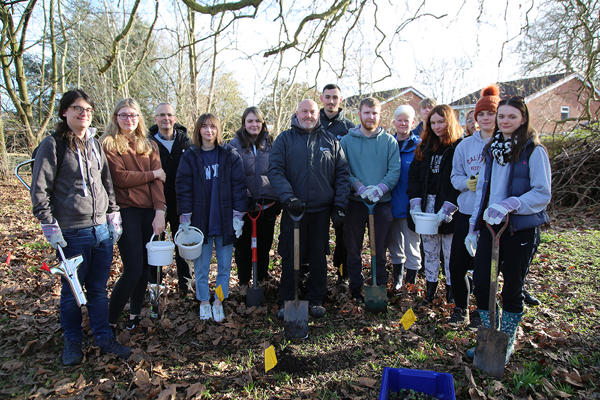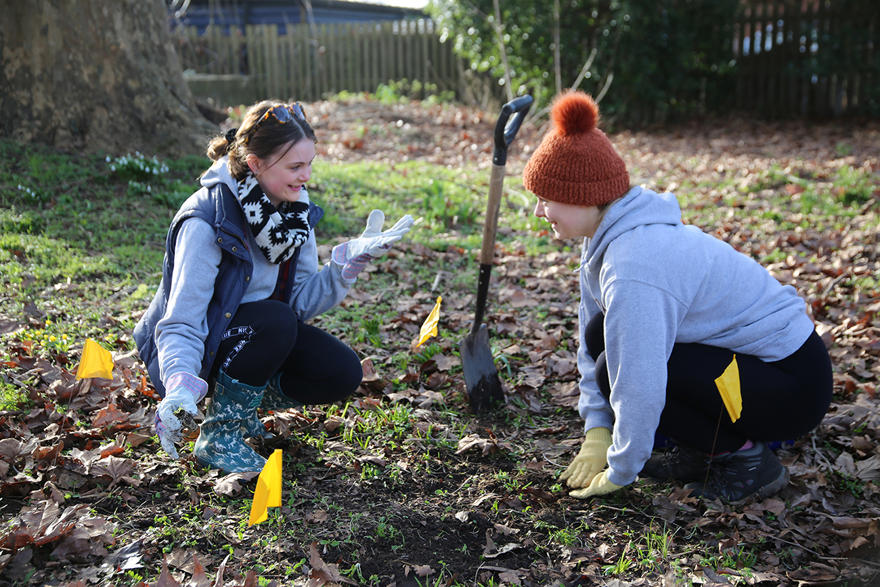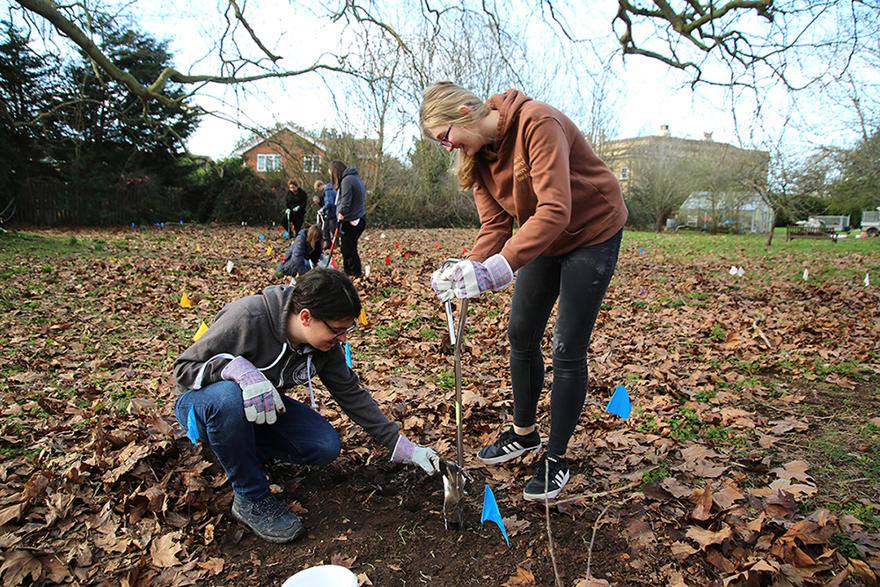Thousands of woodland flowers have been planted at the University of Worcester as part of a project to increase biodiversity on campus.
 Students and staff who planted bulbs at the University's St John's campus
Students and staff who planted bulbs at the University's St John's campus
Students, mainly from the University’s Environmental Management and Sustainability course, and staff joined forces to plant 4,500 bulbs and 300 plants at the University’s St John’s Campus.
These were a mixture of English bluebells, wild garlic, wild daffodils, wood anemone, and primroses. They were planted in two designated areas under existing woodland canopies.
Jodie Franklin, first year student on the Environmental Management and Sustainability course, said: “I think it’s good to be planting these as it’s increasing the biodiversity on campus. It puts what we have been learning into practice and hopefully it will help wildlife. Also, it’s important for the University to lead the way on sustainability, as it sets an example to the students.”
Staff leading the project marked out areas for planting in a mosaic of patches for the different species, with scatterings of plants between these to create a more natural look. It will take at least a year for the plants to find their feet, but they should be flowering next spring.

The project was made possible with a grant from the Natural Networks Programme, which is funded by the European Regional Development Fund, along with further funds from the University.
The Natural Networks Programme, a partnership between Worcestershire County Council and the Worcestershire Wildlife Trust, is a Worcestershire-wide scheme offering grants and advice to projects which aim to create or restore wildlife-rich habitats.
Principal Lecturer in Ecology and Environmental Management, Dr Duncan Westbury, who leads the Environmental Management and Sustainability degree and spearheaded this project, said: “It is highly unlikely these species would ever establish naturally from the surrounding area, so we have given nature a helping hand to boost biodiversity in our mini woodlands. The long-term vision is for ‘carpets’ of bluebells, wild garlic and other plants, providing vital habitat for a range of insects, birds and small mammals; this will also give University students, staff, and visitors the opportunity to immerse themselves in nature as winter turns to spring.”

This is the latest in a number of biodiversity initiatives at the University. Students and staff created a new wildflower area at the St John’s Campus in March last year, one of several wildflower areas on the site. Other schemes have seen the introduction of bee hotels, bird and bat boxes, and a hedgehog box.
Councillor Richard Morris, Worcestershire County Council’s Cabinet Member for the Environment, said: “I am delighted to hear about the work the University of Worcester are doing to boost biodiversity on campus. Through our partnership with the University of Worcester, the Natural Networks Programme funding has enabled us to provide, cultivate and restore rich-wildlife habitats.
“I’m really looking forward to seeing how the programme will continue to help things to develop further and allow us to keep welcoming wildlife to Worcestershire for many years to come.”